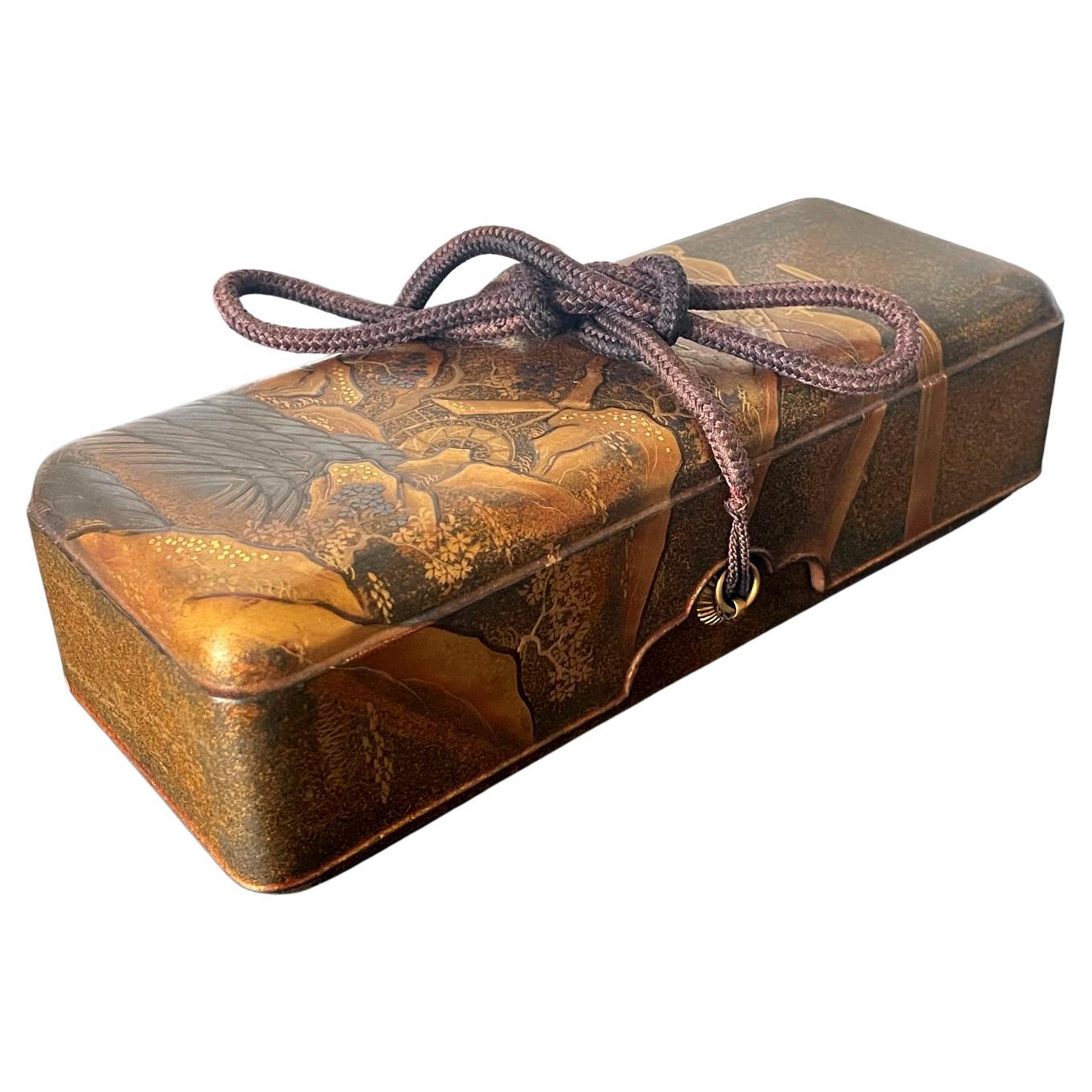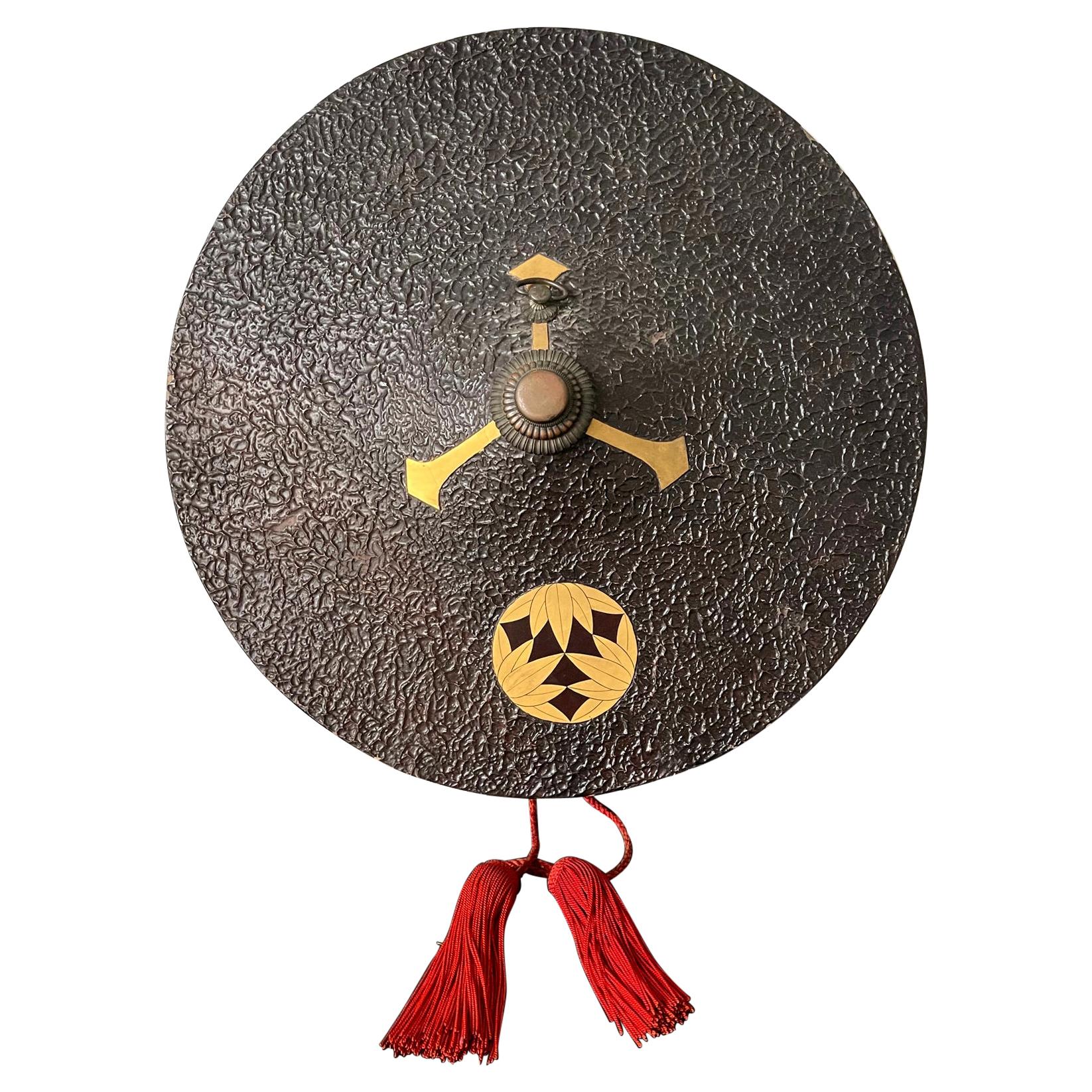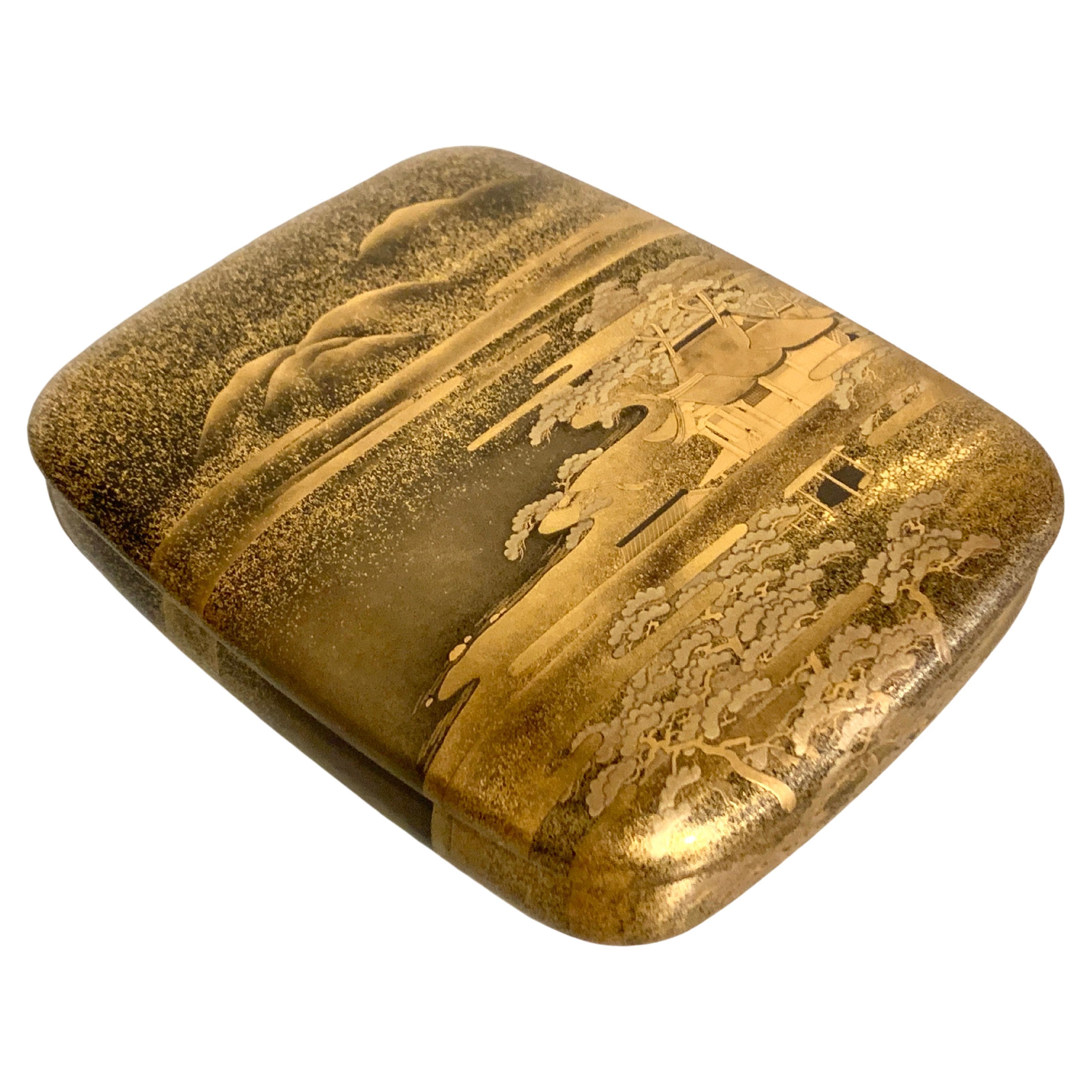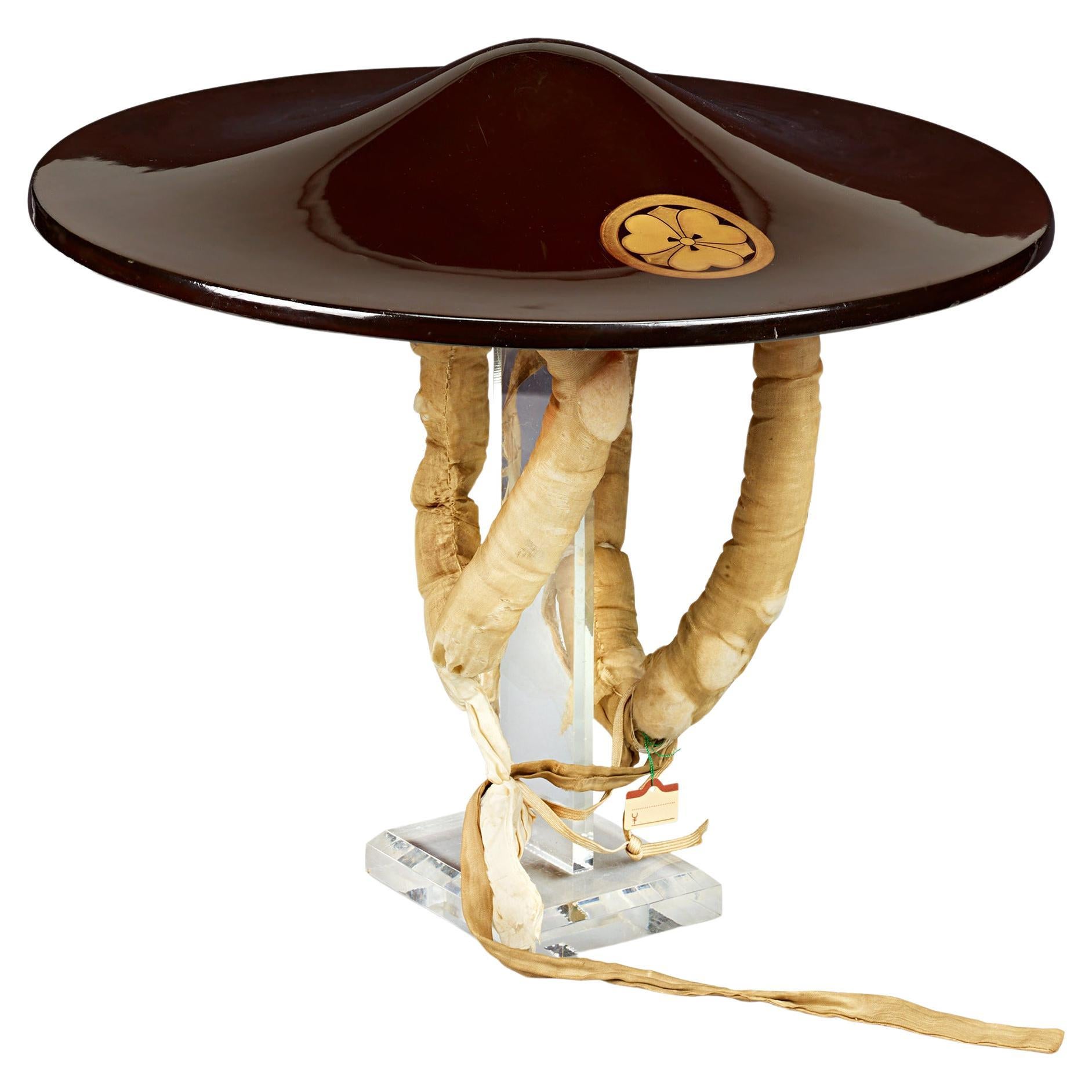Items Similar to Small Lacquered Japanese Kazaridana Cabinet, Edo Period
Want more images or videos?
Request additional images or videos from the seller
1 of 16
Small Lacquered Japanese Kazaridana Cabinet, Edo Period
About the Item
Precious and rare small kazaridana lacquered on all sides with two drawers and three panels decorated with fish, landscapes and birds. The removable panel reveals a locker with a small drawer. The different decorations in hira and taka-maki-e have been executed with astonishing finesse, the smallest details have been rendered ! The interiors have been treated in Nashiji. Finely chiseled silver fittings.
Some small usual wear otherwise very good condition of the decorations.
Japan, Meiji period.
- Dimensions:Height: 21.66 in (55 cm)Width: 24.81 in (63 cm)Depth: 13.78 in (35 cm)
- Style:Meiji (Of the Period)
- Materials and Techniques:Wood,Lacquered
- Place of Origin:
- Period:
- Date of Manufacture:1603-1868
- Condition:Wear consistent with age and use.
- Seller Location:Saverne, FR
- Reference Number:1stDibs: LU8536234512962
About the Seller
5.0
Vetted Seller
These experienced sellers undergo a comprehensive evaluation by our team of in-house experts.
1stDibs seller since 2023
6 sales on 1stDibs
Typical response time: 5 hours
- ShippingRetrieving quote...Ships From: Saverne, France
- Return PolicyA return for this item may be initiated within 3 days of delivery.
More From This SellerView All
- Japanese Cabinet In Cinnabar Red Lacquer, Meiji Era JapanBy KinkozanLocated in Saverne, Grand EstPrecious cabinet in carved cinnabar red lacquer with two leaves and a drawer, revealing six small drawers. The doors are adorned with a porcelain plaque decorated with tits flying am...Category
Antique Late 19th Century Japanese Meiji Lacquer
MaterialsWood
- Suzuribako decorated with a bird of prey in maki-e, Japan Edo periodLocated in Saverne, Grand EstExceptional suzuribako, the outside of the lid decorated with a bird of prey attached to its perch, the inside decorated with an old cherry tree in blossom behind faggots. The interi...Category
Antique 18th Century Japanese Edo Lacquer
MaterialsWood
- Japanese Cabinet In Lacquer And Shibayama, Japan Meiji PeriodLocated in Saverne, Grand EstRare Japanese Shibayama cabinet with multiple drawers and sliding panels. The two central leaves reveal a precious compartment with mult...Category
Antique Late 19th Century Japanese Furniture
MaterialsWood
- Important Japanese Arita (Imari) Porcelain Dish, Japan Edo PeriodLocated in Saverne, Grand EstImportant Arita porcelain dish, with polychrome decorations in blue reserves of different shapes, the coral background embellished with phoenixes and flowers. Japan, 18th century.Category
Antique Late 18th Century Japanese Ceramics
MaterialsPorcelain
- Japanese Arita Porcelain Vase with Imari Decoration, Japan Edo PeriodLocated in Saverne, Grand EstImportant vase with gadrooned body in Arita porcelain with blue, coral and gold decoration of flowers in reserves on a background of lattices and foliage. Japan, 18th century.Category
Antique 18th Century Japanese Ceramics
MaterialsPorcelain
- Japanese Arita porcelain dish with peony design, Japan Edo periodLocated in Saverne, Grand EstArita porcelain dish with decoration of a shishi among peonies. Apocryphal Chenghua mark on reverse. Japan, 18th centuryCategory
Antique 18th Century Japanese Edo Ceramics
MaterialsPorcelain
You May Also Like
- Large Japanese Lacquer Document Box, Ryoshibako, Edo/Meiji period, JapanLocated in Austin, TXA large and magnificently decorated Japanese lacquer document box, ryoshibako, signed Umeboshi/Baikyo, late Edo or early Meiji Period, mid 19th century, Japan. The large document box, ryoshibako, of tall, rectangular shape with rounded corners, and fitted with an inrobuta (flush-fitting) cover with beveled edges. The exterior of this exquisite box is decorated all over with fifteen different raised reserves shaped as uchiwa (paddle) fans against a lush and intricate krikane ground imitating shagreen. The uchiwa shaped reserves all of takamaki-e, and exquisitely painted with designs of animals, flowers, and landscapes in silver, gold, maki-e, hiramaki-e, and takamaki-e, with kirikane, nashiji, and polychrome embellishments, upon gold lacquer fudame grounds. The interior of the lid is nothing short of spectacular, featuring a large design of a magnificent and beautifully detailed rooster and hen with chicks gathered around a lazy stream. Large stalks of chrysanthemum bloom behind them. All against an ethereal nashiji ground. The cover of the box features five reserves: 1. Three minogame (turtles with long tails), symbolizing longevity 2. "Narihira Crossing the Sumida" from The Tales of Ise...Category
Antique 1860s Japanese Meiji Lacquer
MaterialsSoftwood, Lacquer
- Japanese Lacquered Maki-e Fubako Edo PeriodLocated in Atlanta, GAA Japanese lacquered wood fubako (a box used to store document or small scroll painting), circa second half of 19th century late Edo period. The rectangular box features an unusually deep lipped lid with slightly rounded corners, a conforming lower box that is almost entirely covered by the lid which has two bronze medallion rings with tasseled...Category
Antique 19th Century Japanese Edo Lacquer
MaterialsWood, Lacquer
- Japanese Lacquer and Cinnabar "Samurai" Cabinet, Inaba Family, Edo PeriodLocated in Troy, NYExceptionally large and rare lacquer cabinet. According to the heraldry, visible on the headgear in one of the panels, it was made for the Inaba family, a high ranking Daimyo family,...Category
Antique Late 19th Century Japanese Edo Lacquer
MaterialsWood
- Japanese Lacquered Samurai Jingasa Hat Edo PeriodLocated in Atlanta, GAA bespoken Japanese historical hat known as Jinggasa (militant hat) that was worn by samurai in Edo period (1603-1868) circa 18-19th century. There were several subtypes of Jingasa a...Category
Antique 19th Century Japanese Japonisme Lacquer
MaterialsWood, Lacquer
- Japanese Lacquer Stationery Box, Suzuribako, Edo Period, 19th c, JapanLocated in Austin, TXA fine and elegant Japanese lacquer box for writing implements or stationery, suzuribako, with an image of a Shinto shrine, Edo Period, mid-19th century, circa 1840, Japan. The exqu...Category
Antique Mid-19th Century Japanese Edo Lacquer
MaterialsGold Leaf
- Edo-Period Lacquered JingasaLocated in New Orleans, LAComplete with a lacquered surface and original silk straps, this Japanese Edo-period traveling hat, or jingasa, first emerged during the illustrious period between 1603 and 1868, a t...Category
Antique 19th Century Asian Edo Lacquer
MaterialsSilk
Recently Viewed
View AllMore Ways To Browse
Peranakan Mirror
Tetsuya Yamada
Vintage Presentation Kimono
Lacquered R Wardrobe
Qing Chinese Lacquerware Ink Box
Bento Box Vintage
Vintage Japanese Bento Box
Japanese Tanzaku
Bone Inro
Burmese Lacquerware Betel Box
Burmese Yun
Chinese Lac Burgaute
Japanese Bone Inro
Manju Netsuke
Midcentury Black Lacquer Inlay Wall Art
Shibata Zeshin
Temple Ranma Panel
African Wand





